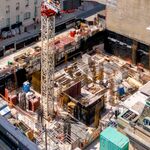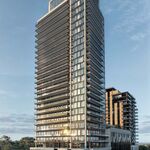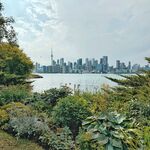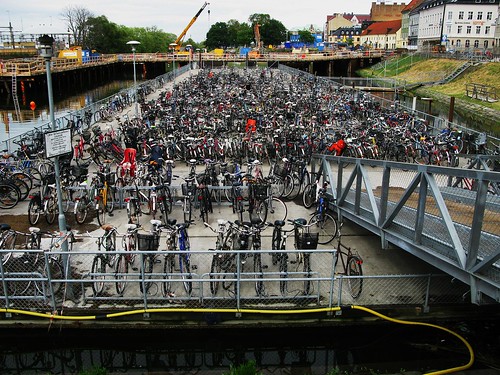"It is human nature to take the path of least resistance. Nobody is going to voluntarily spend more time commuting using an inadequate system of transit when they can do so more efficiently in a car... and this is not what bicyclists are doing either, by the way. They are choosing the option that makes the most sense to them, but which only makes sense to about 11% of the total commuting population of the city of Toronto, per the stats posted by Kettal."
At present the car is seen by many as the path of least resistance . They live in suburbs and drive to work, trading hours of life each week (travel times) for cheap privacy (suburban homes). This has been ingrained into a lot of minds as an ideal for a long time. As fuel prices rise, traffic worsens, and suburbs get more and more distant, that way of life will seem increasingly absurd. It's the path of least resistance in terms of physical effort, but auto-commuting is a stressful, expensive, unhealthy, and time-consuming activity. Transit implementation may not be there yet, but it works, as does living closer. The city core is dense, and its roads have a finite flow; if you think traffic is bad now, realize that it will only get worse. And it won't be because of bicycles. In fact, the bicycle is the most futuristic device on the road right now. It has no emissions, it's quiet, simple, cheap... it's strong in every way that the car is weak.
There will come a time (if it hasn't come yet) when many drivers will bow out of the auto-commuting game and either move to the city where walking, biking, and transit can get them to their destination, or find work closer to their suburban homes. Some have painted semi-apocalyptic pictures of suburban collapse (
http://www.endofsuburbia.com/) but no hyperbole is needed to make the point that if you live way outside the city, bikes sharing the road with you will be the least of your problems. Even if we seem to be far from a crisis, I say we should be futuristic in thought. Sacrifice car space for bike space today in the form of bike lanes, but also make serious improvements to transit. Above all, the goal should be to get cars containing single commuters off the road, leaving the space instead for vehicles with some degree of inherent efficiency (buses, large automobiles that transport goods and materials in bulk, bikes, and pedestrians). I guess what I'm talking about is a war on cars. But wouldn't it be better to change voluntarily than to be decapitated by a future everyone can see coming?
As for the specific projects under discussion in this thread, I think they're well-intentioned but unlikely to be proven useful. As someone posted here somewhere, what's needed is a grid that establishes long, continuous routes both east/west and north/south at convenient intervals. Comprehensiveness is key to adoption by casual riders.





